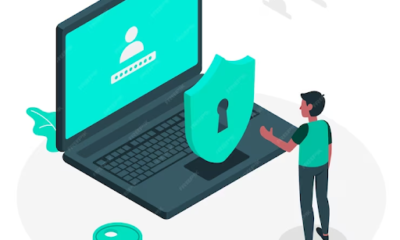Latest News
7 WAYS CYBERCRIME POSES SECURITY THREATS
With increased consciousness and understanding of technology, from consumers and hackers alike, the risks for the cyber scam are heightened. In order for individuals and corporations to guard their information online, it is crucial for security safety measures to be taken to protect against cyber security breaches.
As mobile technology is continuously emerging, so are reports of large cyber breaches at major financial and technology companies are on the rise daily. Reports indicate that such crimes include; identify theft, cyber terrorism and cyber espionage. As technology develop and advance, so do the rate of cybercrimes committed increases. While the breach barrage gathers momentum, solution providers work round the clock in order so to look out for cybercrimes before they happen and shield people when they occur.
The following are seven ways evolving technology has changed cybersecurity:
1. Corporate Security Breaches
Most of these cybercrime targeting big companies occur when hackers steal employees’ personal information by deploying social engineering and scams. Advancement in technology has enabled hackers to find weak points in corporate security systems and steal protected files and data. This has posed a serious cybersecurity threat to the corporate security system.
2. Spear Phishing
Spear phishing is an e-mail spoofing fraud attempt that targets a specific organization, seeking access to confidential information. Spear phishing culprits are motivated by financial gain intention, trade secrets or military information. Unlike the regular emails used in phishing activities, spear phishing email seems to come from an individual within the recipient’s own company and particularly some in a position of authority. The success of spear phishing depends upon the apparent source must appear to be known and trusted individual, the appeal the one makes appear to have a sound basis and there is information within the message that supports its validity.
Cyber criminals have taken their efforts a notch higher, they are using social media to perpetrate identity theft methods, and lure persons to download malicious codes or reveal passwords. Hackers can hack into users social media accounts and use that information later to gain access to a personal email account, work email account and banking information.
3. Social Media Security Breaches
Social media sites not only can share your exact whereabouts at any point in time but also can give hackers access to a personal formation. Social media allows any number of people to tell where you are, and at what time of day by just logging into the social network and looking at your profile.
The level of cybersecurity threats has increased with emerging mobile technology. Currently, every smartphone serve as an accessory for a cyber-attacker to access to someone’s personal information. As many smartphones can be plugged into computer ports to be changed, this can create malware issues for many different devices.
4. Data has Gone Digital
Virtually everything is digital these days. Although information is usually guarded by password, most of the data are stored on a shared network. This poses a risk because a hacker can gain access to the network and obtain information that could jeopardize businesses.
The proliferation of storing information on cloud networks has become quite attractive to many businesses because it is efficient and cost effective. However, it poses an additional cybersecurity risk. It is, therefore, important for companies to adopt security measures to protect information on the cloud.
5. Advanced Employee Training
There are a rising number of people becoming more technologically savvy as the smartphone market expands. There is, therefore, a need for companies to educate its employees in order to gain the critical knowledge needed to protect companies from serious cyber threats and how to avoid them.
This, therefore, enables employees to get gain information from their employers from databases, the cloud.
6. Hacktivism
Hacktivism is the act of hacking, or breaking into a computer system, for a politically or socially motivated purpose. The perpetrator uses the same methods as a hacker but does so in order to interrupt services and bring attention to a social cause. Hackers are attempting access websites with a large number of visitors accessing information in order to drive much traffic.
7. Botnets
A botnet also known as a zombie army is a set of internet computers that, though their owners are not aware of it, have been set up to forward spam or viruses to various computers on the internet. According to a report from Russian-based Kaspersky Labs, botnets is the major risk to the internet.
With the advancement in technology, botnets are collecting more information from computers such as address, name, financial information, age and online activities. These botnets pose a major security risk to personal information.
If you find this article helpful, please Enter your email bellow to subscribe for more latest technology News and Articles from Tech Announcer.

































